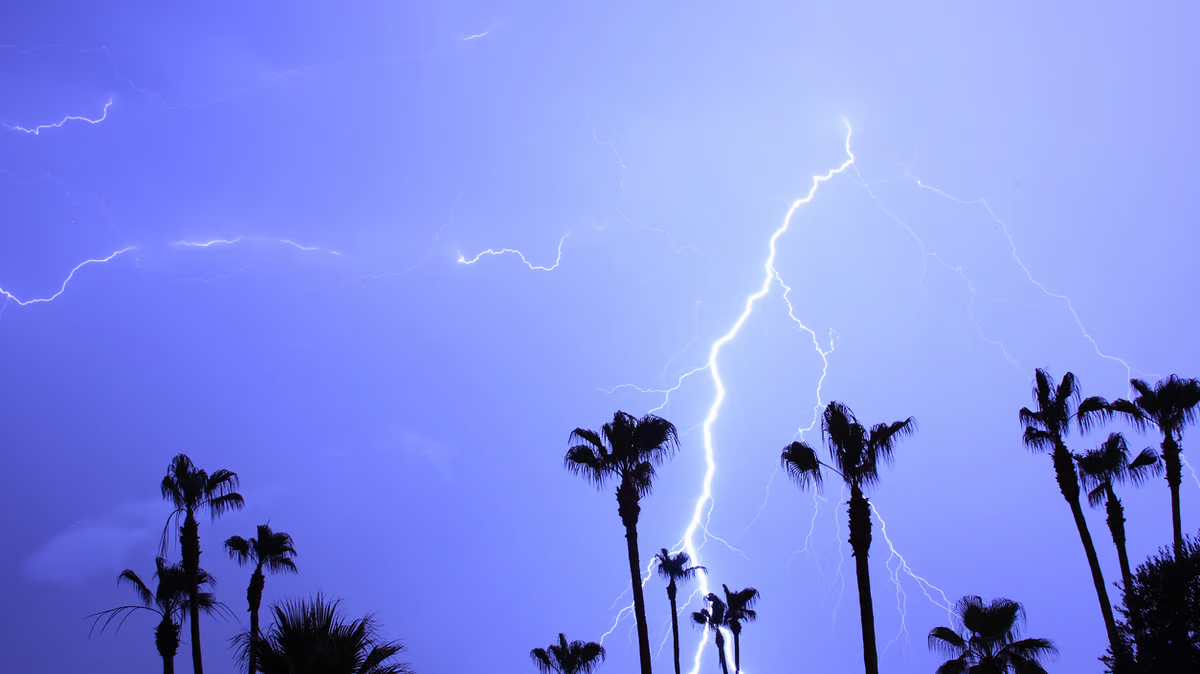- Courses
- GS Full Course 1 Year
- GS Full Course 2 Year
- GS Full Course 3 Year
- GS Full Course Till Selection
- Answer Alpha: Mains 2025 Mentorship
- MEP (Mains Enrichment Programme) Data, Facts
- Essay Target – 150+ Marks
- Online Program
- GS Recorded Course
- Polity
- Geography
- Economy
- Ancient, Medieval and Art & Culture AMAC
- Modern India, Post Independence & World History
- Environment
- Governance
- Science & Technology
- International Relations and Internal Security
- Disaster Management
- Ethics
- NCERT Current Affairs
- Indian Society and Social Issue
- NCERT- Science and Technology
- NCERT - Geography
- NCERT - Ancient History
- NCERT- World History
- NCERT Modern History
- CSAT
- 5 LAYERED ARJUNA Mentorship
- Public Administration Optional
- ABOUT US
- OUR TOPPERS
- TEST SERIES
- FREE STUDY MATERIAL
- VIDEOS
- CONTACT US
Odisha's Palm Tree Shield Against Lightning
Odisha's Palm Tree Shield Against Lightning

Location: Odisha, India
Odisha is one of the worst-affected states in India by lightning strikes, particularly during the pre-monsoon and monsoon periods. The state has witnessed a significant number of deaths due to lightning strikes, with an average of 300 deaths annually.
Government Initiative:
To combat lightning deaths, the Odisha government has restricted the cutting of existing palm trees and plans to plant around 1.9 million palm trees across the state. The government has made it mandatory to obtain permission from the forest department to cut palm trees on private land premises.
Rationale:
Palm trees act as natural conductors during lightning strikes, preventing loss of lives. The government's decision to plant palm trees is based on the idea that these trees can absorb lightning strikes, reducing the risk of casualties.
Implementation:
The forest department will plant four palm trees near the boundary of each forest block, with an estimated expenditure of Rs 7 crore. The department aims to plant 1.9 million palm trees across the state in 2024-25.
Background:
The restriction on felling palm trees was initially imposed under the Odisha Timber and Other Forest Produce Transit Rule but was later withdrawn due to public demands. However, with the increasing number of deaths from lightning, the government has reinstated the restriction.
About Palm Trees:
Definition: Palm trees belong to the Arecaceae or Palmae family, a group of monocotyledonous flowering plants of the order Arecales.
Characteristics:
- Evergreen plants that can grow as shrubs, trees, or long, woody vines (lianas).
- Tall, unbranched stem or rarely, dichotomous branching stem.
- Stem has the same diameter from base to top.
- Leaves are coriaceous, palmate, or pinnate, and can grow up to several meters long.
- Palmate leaves grow in a bunch at the end of a stem, resembling hands.
- Pinnate leaves grow along either side of a stem, resembling feathers.
Distribution:
- Mainly found in America, Asia (from India to Japan), Australia, Pacific and Indian oceans, and Africa.
- Africa and Madagascar are less prominent palm regions.
Importance and Threats:
- Many species are sturdy and plentiful, but around 100 species are endangered due to deforestation and unsustainable cultivation practices.
- Coconut and African oil palm (Elaeis guineensis) are prime sources of vegetable oil and fat.
- The rarest palm tree is the Hyophorbe amaricaulis, with only one remaining in the Botanic Gardens of Curepipe, Mauritius.
Monocotyledons:
A group of flowering plants (angiosperms) characterized by having a single cotyledon (seed leaf) in their seeds.
Examples of Monocotyledons:
- Grasses (Poaceae).
- True grains:
-
- Rice.
- Wheat.
- Maize.
- Pasture grasses.
- Sugar cane.
Expert Opinions:
- A senior retired forest officer welcomes the government's move to restrict the chopping down of existing palm trees, stating that it will help mitigate lightning deaths naturally.
- A professor in the Department of Geography at FM University questions the scientific validity of palm tree planting as a solution to reduce lightning deaths, citing that it takes around 20 years for a palm tree to become fully grown and effectively observe lightning.
- Director of Aryabhatta Foundation notes that tall trees like palms can absorb lightning, but it is not a foolproof solution.
- A retired professor of Botany suggests that not only palm trees but any tall trees can absorb lightning and that the government should re-impose restrictions on cutting tall trees to minimize deaths due to lightning strikes.
Statistics:
- 300 people die annually in Odisha due to lightning strikes.
- 2,058 deaths from lightning strikes were reported in Odisha between 2018-19 and 2022-23.
- 16,372 people have died in various natural calamities in Odisha between 2018-19 and 2022-23.
- Lightning strikes claim nearly 2,500 human lives annually in India.
Government Response:
- Lightning was declared a state-specific disaster in Odisha in 2015.
- The state government provides ex-gratia of Rs 4 lakh to the family of the deceased in case of death due to lightning strike.
Challenges:
- Ensuring the survival rate of the palm trees, which takes around 20 years to become fully grown.
- Addressing the concerns raised by experts about the scientific validity of palm tree planting as a solution to reduce lightning deaths.
Conclusion :
- The Odisha government's initiative to plant palm trees is a step in the right direction, but it needs to be complemented with other measures to reduce lightning deaths, such as awareness campaigns and education programs.
- The government should also consider the concerns raised by experts and explore other solutions to mitigate lightning deaths, such as installing lightning rods and conducting research on lightning strikes.
Must Check: Best IAS Coaching In Delhi



